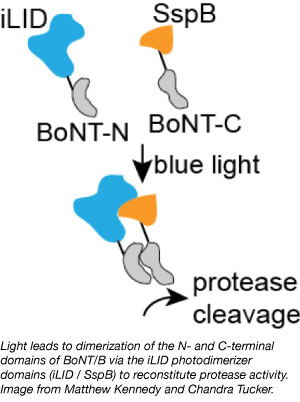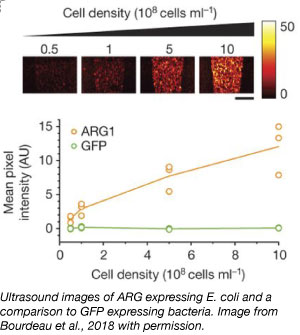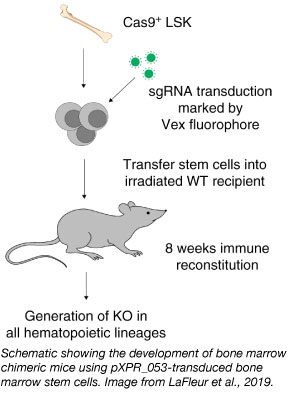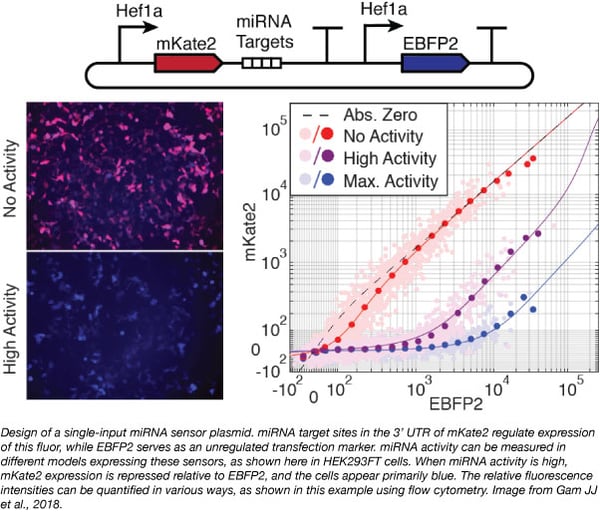 Every few months we highlight a subset of the new plasmids in the repository through our hot plasmids articles. These articles provide brief summaries of recent plasmid deposits and we hope they'll make it easier for you to find and use the plasmids you need. If you'd ever like to write about a recent plasmid deposit please sign up here.
Every few months we highlight a subset of the new plasmids in the repository through our hot plasmids articles. These articles provide brief summaries of recent plasmid deposits and we hope they'll make it easier for you to find and use the plasmids you need. If you'd ever like to write about a recent plasmid deposit please sign up here.
Listen to this episode of the Hot Plasmids podcast
Light-mediated block of synaptic transmission
Article contributed by Klaus Wanisch
 An optogenetic tool that allows light-mediated silencing of synapses was developed by Matthew J. Kennedy’s and Chandra L. Tucker’s labs from UC Denver. At the core of this tool is the endoprotease Botulinum Neurotoxin B (BoNT/B), which cleaves the synaptic protein VAMP2, a protein essential for synaptic transmission. Cleavage of VAMP2 renders it inactive, thus inhibiting neurotransmitter release. How is this light-mediated? The researchers split the proteolytically active light chain of BoNT/B into two fragments (BotNT-N and BotNT-C) and joined each fragment with one part of an established pair of proteins (iLID and SspB) that undergo light-induced dimerization.
An optogenetic tool that allows light-mediated silencing of synapses was developed by Matthew J. Kennedy’s and Chandra L. Tucker’s labs from UC Denver. At the core of this tool is the endoprotease Botulinum Neurotoxin B (BoNT/B), which cleaves the synaptic protein VAMP2, a protein essential for synaptic transmission. Cleavage of VAMP2 renders it inactive, thus inhibiting neurotransmitter release. How is this light-mediated? The researchers split the proteolytically active light chain of BoNT/B into two fragments (BotNT-N and BotNT-C) and joined each fragment with one part of an established pair of proteins (iLID and SspB) that undergo light-induced dimerization.
Upon application of blue light, iLID undergoes a conformational change allowing high affinity binding to SspB, brings together the split botulinum neurotoxin halves to enable VAMP2 cleavage, and suppresses neuronal transmission within minutes. Constructs using the photodimerizer system CRY2-CIB1 to regulate botulinum neurotoxin were also created. The depositors demonstrated the utility of light-mediated suppression of synaptic transmission in brain slices from mouse, and showed that it can alter motor responses in C. elegans.
Find the split BoTN/B plasmids at Addgene.
Liu Q et al., Neuron. 2019. PubMed PMID: 30704911.
Acoustic reporter genes for noninvasive imaging of microbes in mammalian hosts
Article contributed by Lukas Morgan
 In recent years, scientists are beginning to find connections between the microbiome and diseases, the immune system, and other vital systems in the body. When a microbe travels through a host organism, the expression of some genes can change depending on the location. Current methods for visualizing the location and function of microbes rely heavily on fluorescent protein genes. These optical reporters have limited deep-tissue performance, and sometimes require an alternative such as a radioactive tracer. As a solution, Mikhail Shapiro’s lab has developed four acoustic reporter gene (ARG) plasmids to better monitor gene expression in vivo using ultrasound.
In recent years, scientists are beginning to find connections between the microbiome and diseases, the immune system, and other vital systems in the body. When a microbe travels through a host organism, the expression of some genes can change depending on the location. Current methods for visualizing the location and function of microbes rely heavily on fluorescent protein genes. These optical reporters have limited deep-tissue performance, and sometimes require an alternative such as a radioactive tracer. As a solution, Mikhail Shapiro’s lab has developed four acoustic reporter gene (ARG) plasmids to better monitor gene expression in vivo using ultrasound.
These ARG plasmids contain genes for “gas vesicles,” a gas-filled protein structure that water-bound photosynthetic organisms use for buoyancy. These proteins allow dissolved gases to diffuse in and out but prohibit water from entering their hollow interiors. The Shapiro lab discovered in 2014 that these gas vesicle proteins scatter sound waves and create ultrasound contrast. At a very low volumetric density and with a resolution of less than 100 µm, the ARG reporters could be successfully visualized in vivo using ultrasound in Escherichia coli and Salmonella Typhimurium. This work demonstrates engineered gas vesicles as the first reporter genes using ultrasound and provide a major benefit to scientists studying microbiome systems that are potentially problematic for imaging.
Find the ARG plasmids at Addgene.
For more details on acoustic reporters, check out this blog post.
Bourdeau RW, et al., Nature. 2018. PubMed PMID: 29300010.
miRNA reporter vectors shed new light on mechanisms of miRNA-mediated gene regulation
Article contributed by Michael Lemieux
Discovered in the early 1990’s, microRNAs (miRNAs) are recognized as important regulators of post-transcriptional gene expression across the majority of cellular pathways. Despite several years of research, the mechanisms of miRNA regulation have yet to be fully elucidated. Ron Weiss’s lab at MIT pushed the field further with the creation of the largest miRNA sensor collection reported to date, containing all 620 sequences of probable mature human miRNAs.
Weiss’s collection consists of a library of reporter plasmids, each containing two fluorescent proteins and four repeats of a miRNA target site. One fluorescent protein (EBFP2) is expressed in an unregulated fashion and thus a marker for transfection. The other (mKate2) is regulated in the 3’ UTR by four miRNA target sites and thereby serves as a sensor of miRNA presence and activity in a given system. If an miRNA is present, it will repress expression of mKate2 relative to EBFP2. Weiss’s group used these reporters to define a subset of active miRNA’s unique to HEK293FT and HeLa cell lines. When the miRNA activity profile for a given cell type is already known, these reporters can help define the different cells present in a mixed population, or identify differentiation and disease states. This collection of reporter plasmids is amenable to Golden Gate assembly for turning the single-input reporters into multi-input cell classifiers in one assembly step.
Find the miRNA reporter collection at Addgene!
Gam JJ et al., Nat Commun, 2019. PubMed PMID: 29934631.
Screening immune cell lineages in vivo using the CRISPR-Cas9 system CHIME
Article contributed by Aliyah Weinstein
 Understanding the connection between specific genes and an immune response has been a longstanding challenge. Using shRNA, TALEN, or ZFN to edit immune cells poses challenges such as the inhibition of immune cell differentiation. Furthermore, TALEN and ZFN require custom nucleases for each gene of interest. CRISPR-Cas9 tools have been used in immunology for in vitro screens of immune cell activity. However, a CRISPR-based tool for in vivo functional analysis of immune cells has been a gap in the field.
Understanding the connection between specific genes and an immune response has been a longstanding challenge. Using shRNA, TALEN, or ZFN to edit immune cells poses challenges such as the inhibition of immune cell differentiation. Furthermore, TALEN and ZFN require custom nucleases for each gene of interest. CRISPR-Cas9 tools have been used in immunology for in vitro screens of immune cell activity. However, a CRISPR-based tool for in vivo functional analysis of immune cells has been a gap in the field.
Find the CHIME plasmids at Addgene.
LaFleur et al., Nat Commun. 2019, PubMed PMID: 30971695.
Topics: Other Plasmid Tools, Plasmids







Leave a Comment